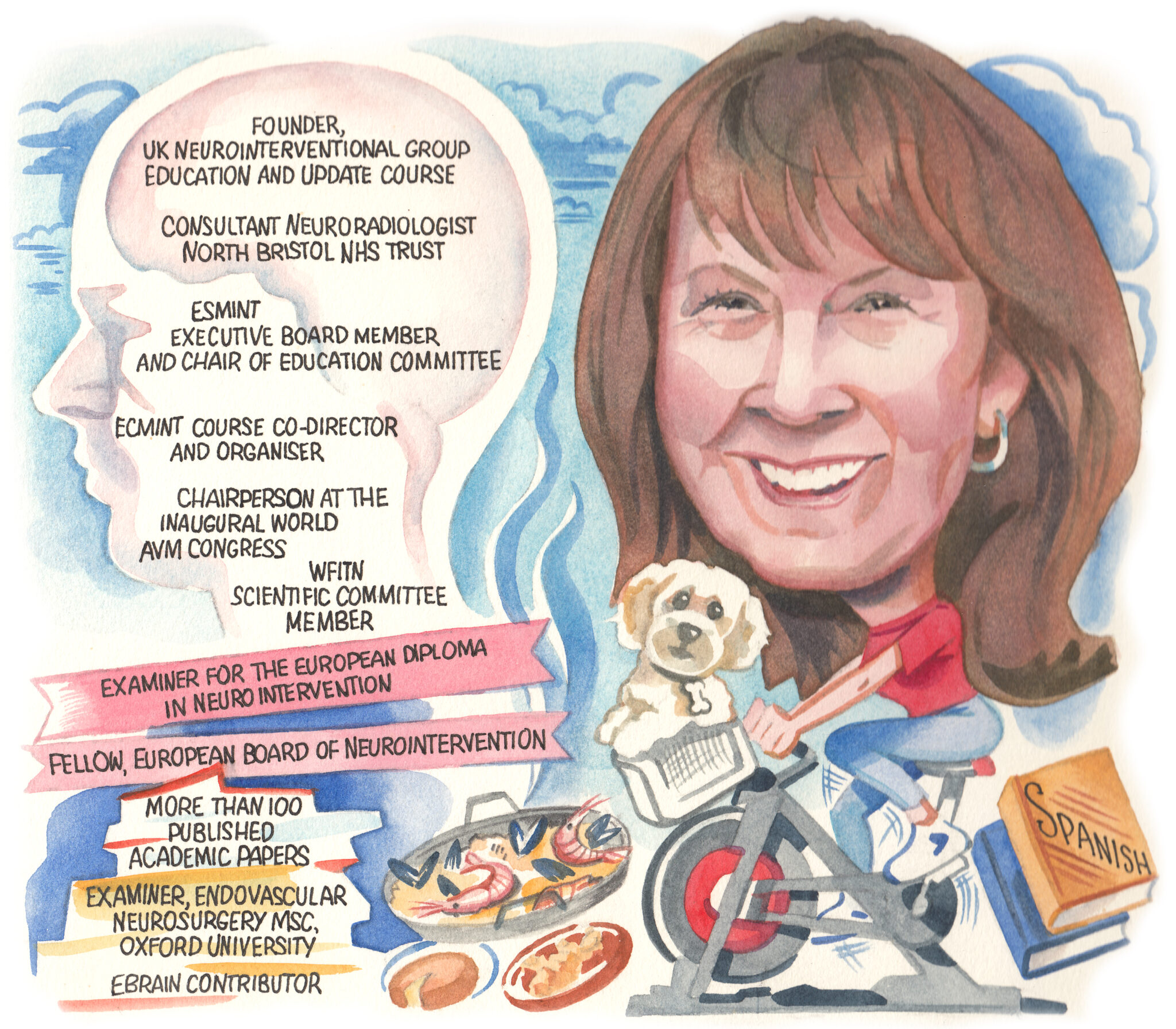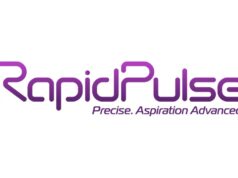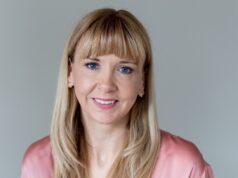 Through her many years as a consultant neuroradiologist at the North Bristol NHS Trust (Bristol, UK), as well as organising the European Course in Minimally Invasive Neurological Therapy (ECMINT) and making leading contributions to the UK Neurointerventional Group, Shelley Renowden has played a significant role in growing the specialty of interventional neuroradiology (INR) across the UK. In recent years, her work in training future generations of INRs has also expanded overseas through the European Society of Minimally Invasive Neurological Therapy’s (ESMINT) education committee. Renowden discusses these efforts, the formative years of her career, and some of the most pressing matters in the neurointerventional field right now, with NeuroNews.
Through her many years as a consultant neuroradiologist at the North Bristol NHS Trust (Bristol, UK), as well as organising the European Course in Minimally Invasive Neurological Therapy (ECMINT) and making leading contributions to the UK Neurointerventional Group, Shelley Renowden has played a significant role in growing the specialty of interventional neuroradiology (INR) across the UK. In recent years, her work in training future generations of INRs has also expanded overseas through the European Society of Minimally Invasive Neurological Therapy’s (ESMINT) education committee. Renowden discusses these efforts, the formative years of her career, and some of the most pressing matters in the neurointerventional field right now, with NeuroNews.
What initially attracted you to medicine, and the field of neuroradiology specifically?
I was attracted to a career in medicine because I considered it to be challenging, very varied, stimulating, and fun, while meeting lots of people. Who wants a boring career spanning 35 years or more? I went into radiology for the same reasons—on my elective, it was a radiologist who stimulated me the most by a long way and, when doing my internship, it was the radiologists who seemed to be the most knowledgeable and human! I went into academic radiology, not only doing cross-sectional imaging (my chosen specialty at that time—I did actually declare at one point that I would never do another cerebral angiogram!), but also working towards an MD in vasomotor control mechanisms in the human umbilical artery and a chance ‘throwaway’ remark one day catapulted me into neuroradiology. The neuroradiology consultant in the University Hospital of Wales (Cardiff, UK), Margaret Hourihan, was due to go on maternity leave and could not find a locum for her period of absence. As a lecturer, I asked her if she wanted me to do it. She was delighted, and I did a consultant neuroradiology locum for four months and absolutely loved it. After that, I obtained a neuroradiology training post at the Radcliffe Infirmary (Oxford, UK) where I spent four wonderful, stimulating, exciting, inspiring and enjoyable years.
Who have your mentors been and how have they impacted your career?
Margaret Hourihan brought me into neuroradiology and encouraged me. The neuroradiologists at the Radcliffe Infirmary provided a wonderful training— particularly Andrew Molyneux, guiding me into neurointervention, and Philip Anslow, the best diagnostic neuroradiologist and teacher I have ever met (and great fun). He encouraged my diagnostic skills in paediatric neuroradiology, epilepsy and the skull base, which I did whilst also expanding the INR service in Bristol many years ago. My interventional training in Oxford and my supportive neurovascular surgical colleagues in Bristol (Richard Nelson and also, later, David Porter), and as well as highly specialised and dedicated neurovascular nurses and radiographers, have enabled the development of a nationally acclaimed UK neurovascular centre and the training of INRs—our first being Marcus Bradley, who is still a current source of great support. With James Byrne, I embarked upon the first Oxford MSc course in endovascular surgery (along with the fabulous Paul Brennan from Dublin, Ireland), and I will always be enormously grateful and indebted to James, because he asked me to help him start up and run ECMINT. This has had a major impact on my career and I only wish it had come earlier. I also need to include Anil Gholkar, who provided invaluable support and advice in my earlier professional years. I thank them all.
How was the ECMINT course set up, and why is it an important offering in this space?
ECMINT was the dream of James Byrne and the ESMINT board. James had already booked St Anne’s College (Oxford, UK) and had a curriculum sketched out, but we organised the first course within three months—I do not know how we achieved that! Firstly, it is important because it is a very intense theoretical course. Every cycle comprises four courses, each of which is nearly one week long and encompasses all the knowledge necessary for the practice of INR, with detailed vascular anatomy, embryology, pharmacology, pathophysiology and haematology techniques (also neurosurgery and radiosurgery where applicable), and now medical statistics and an expanding spinal component as well. It comprises a series of lectures and tutorials given by European experts, and formative quizzes and exams. Attendance for an entire cycle and passing the course exams are an entry criterion for the European Diploma in Neurointervention (EDNI). I wish it had existed in my formative years, because it would have made life so much easier and I would almost certainly have been a better INR. I have learnt so much from ECMINT, and it also provides a base for INRs to meet from all over world, to discuss and form long-lasting professional relationships. St Anne’s College just buzzes with energy and enthusiasm during the week of the course. One feels totally rejuvenated and exhilarated even after an extremely intense week.
What do you feel has been the most important development in the INR field during your career?

I have been very lucky to be involved in INR during a period of great development and transformation, so I must include two. First, Guglielmi detachable coil (GDC)-embolisation of intracranial aneurysms, leading to the ISAT study—this was a major contribution to the management of intracranial aneurysms that significantly enhanced and consolidated the field of INR. It paved the way for advances in other endovascular devices to manage more complex aneurysms (and, of course, the Solitaire stent [Medtronic] went on to be a major player in stroke thrombectomy). Currently, the vast majority of aneurysms are treated endovascularly. Second—obviously—thrombectomy for large vessel occlusion in hyperacute ischaemic stroke, which significantly improves outcomes for many thousands of patients (and their families) worldwide each year and lessens the stroke burden on society.
What is the most significant unmet need in neuroradiology right now?
Probably, in many countries, effective and more efficient management of the entire stroke service is an important need. In no other area of medicine (except perhaps major trauma) is an efficient collaborative team effort so important but, on a global scale, we may still be a little way off from “drip and drive” at the moment.
Besides your own work, what is the most interesting piece of neurointervention research you have seen in the past year?
Neuroprotection—because, despite thrombectomy, around 50% of patients do not achieve independence. I think neuroprotection in conjunction with revascularisation is a potentially exciting and certainly interesting advance in stroke management and, possibly, in delayed cerebral ischaemia in subarachnoid haemorrhage too, where changes at a cellular level are similar. Many agents and methods are currently being trialled and investigated.
How would you assess the representation of female physicians in INR?
Diversity in any group is important and this is increasingly recognised. The number of female physicians in INR is growing—although still not enough— and I only have to look at the numbers of female attendees at ECMINT to see that. Role models and support for women are necessary. A great professional WhatsApp group has mushroomed in the space of one year and currently includes more than 700 women from all over the world, providing not only support but also a valuable source of education and advice. The necessary role models are out there. Assertiveness and leadership training are critical in the training of most female INRs, to enable their development and to lead the way.
What advice would you give to people embarking on a career in neuroradiology?
I would advise them to be thorough in their work and not take shortcuts. I recommend thoughtful, questioning and regular reading. One should listen to and be able to discuss with colleagues. Include others, be respectful and supportive, and do not show irritation. I also urge leading multidisciplinary meetings, teaching and lecturing, ‘putting yourself out there’ and involvement in professional societies from an early stage.
What are your interests outside of the field of medicine?
Sport is important for brain health and general wellbeing, and I go to the gym two or three times each week and have a weekly intensive tennis lesson— which completely suits my competitive spirit! I also love cooking, trying out new recipes and entertaining my friends. I have always loved learning languages and, for the last few years, I have had weekly Spanish lessons. My progress is not nearly as fast as I would like—I really need to visit Spain to practise. We have a cavapoochon, a highly intelligent, communicative and very spoilt dog who requires a lot of attention.
Fact file
Current (or recent) roles:
- Consultant neuroradiologist, North Bristol NHS Trust (Bristol, UK)
- Examiner, Endovascular Neurosurgery MSc, Oxford University (Oxford, UK)
Societies:
- 2012: Chairperson at the inaugural World Arteriovenous Malformation (AVM) Congress
- 2014–2020: ESMINT Executive Board member and chair of Education Committee
- 2016–2019: Examiner for the European Diploma in Neurointervention
- 2019: World Federation of Interventional and Therapeutic Neuroradiology (WFITN) Scientific Committee member
- ECMINT course co-director and organiser
Honours (selected):
- Education and update course founder, UK Neurointerventional Group
- Fellow, European Board of Neurointervention
- More than 100 published academic papers
- Journal referee for British Journal of Neurosurgery; JNNP; Journal of Neurology; Neuroradiology; World Neurosurgery
- Contributor to eBrain













